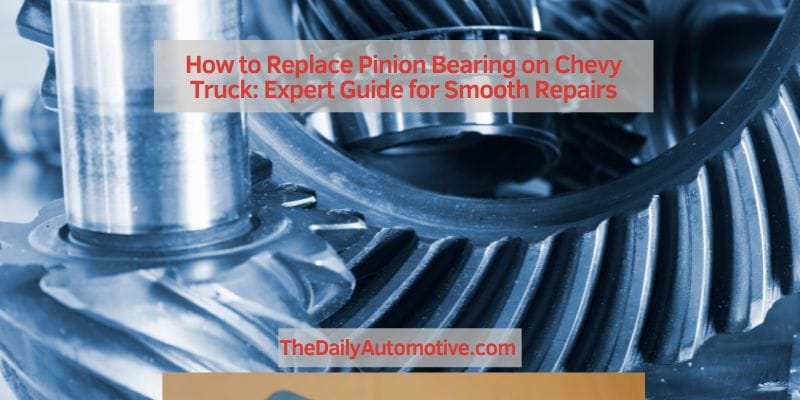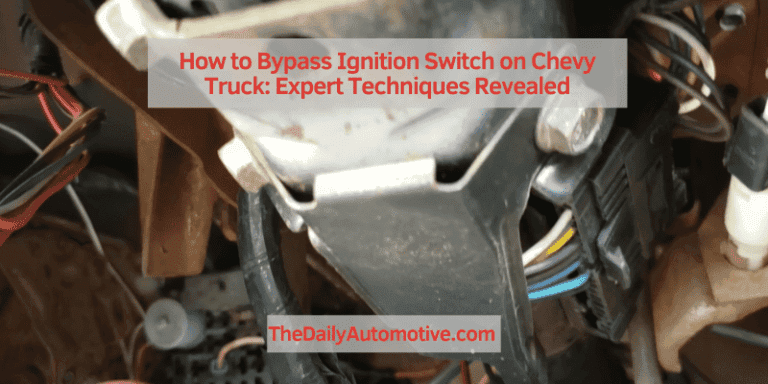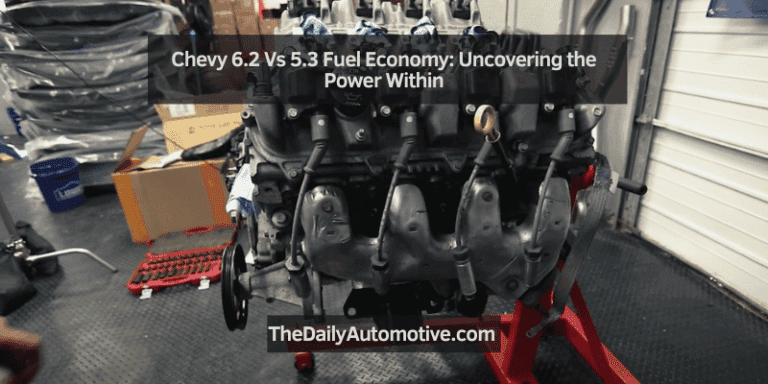How to Replace Pinion Bearing on Chevy Truck: Expert Guide for Smooth Repairs
To replace the pinion bearing on a Chevy truck, begin by lifting the vehicle and removing the differential cover. Then, remove the pinion shaft and old bearing.
Place the new bearing onto the pinion gear and reassemble the components. Use high-quality tools and follow manufacturer guidelines for best results. Replacing the pinion bearing on your Chevy truck is a straightforward process that can be done with a few essential tools and some mechanical know-how.
By following the steps outlined in this guide, you can ensure that your truck’s drivetrain operates smoothly and reliably. Regular maintenance of essential components like the pinion bearing is crucial to the long-term performance and durability of your vehicle. Keep reading to learn the necessary steps to complete this task.
Importance Of Pinion Bearings
The pinion bearing is a critical component in the drivetrain of a Chevy truck. It plays a crucial role in ensuring smooth and efficient power transfer from the driveshaft to the rear axles. The importance of pinion bearings cannot be overstated, as they directly impact the vehicle’s performance, handling, and overall driving experience.
Significance In Vehicle Performance
The pinion bearing is essential for maintaining the proper alignment and rotation of the driveshaft and rear axles. When the pinion bearing is in optimal condition, it allows for seamless power transmission, ensuring that the rear wheels receive the necessary torque from the engine. A well-maintained pinion bearing contributes to improved fuel efficiency, reduced noise and vibration, and overall smooth operation of the vehicle.
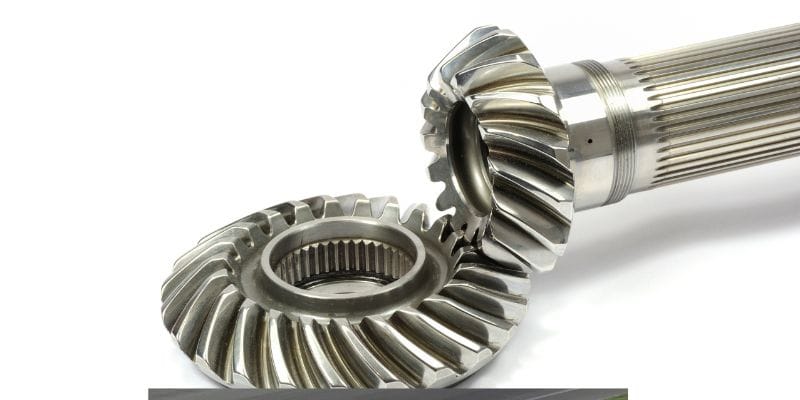
Common Signs Of A Failing Pinion Bearing
- Excessive noise: A worn-out or failing pinion bearing often produces a distinct rumbling or whining noise, especially during acceleration or deceleration.
- Vibration: Unusual vibrations felt through the drivetrain, particularly at specific speeds, can indicate potential issues with the pinion bearing.
- Leakage of gear oil: If there is evidence of gear oil leaking from the rear differential, it could be a sign of a failing pinion seal or bearing.
- Uneven tire wear: A failing pinion bearing can lead to uneven tire wear, as it affects the proper distribution of power to the rear wheels.
Identifying and addressing these common signs of a failing pinion bearing is crucial to prevent further damage to the drivetrain and ensure the continued reliable performance of your Chevy truck.
Preparing For Pinion Bearing Replacement
Before jumping into the process of replacing the pinion bearing on your Chevy truck, it’s important to properly prepare. This includes gathering necessary tools and materials as well as taking precautions and safety measures to ensure a smooth and efficient replacement process.
Gathering Necessary Tools And Materials
When preparing to replace the pinion bearing on your Chevy truck, having the right tools and materials at your disposal can make the job much more manageable. Here’s a list of essential items you’ll need for a successful pinion bearing replacement:
- Jack and jack stands: To elevate the truck safely and securely.
- Socket set: Including various sizes to fit different nuts and bolts.
- Torque wrench: Essential for tightening bolts to the correct specifications.
- Bearing puller: For removing the old pinion bearing.
- New pinion bearing: Ensure you have the correct replacement part for your specific Chevy truck model.
- Gasket sealant: To reseal any components that require it.
- Protective gloves and eyewear: To keep your hands and eyes safe from potential hazards.
Precautions And Safety Measures
Working on any vehicle requires a keen focus on safety to prevent accidents and injuries. Here are some important precautions and safety measures to observe when replacing the pinion bearing on your Chevy truck:
- Secure the truck: Ensure the truck is on a level surface and securely supported by jack stands.
- Disconnect the battery: Prevent electrical mishaps by disconnecting the battery before starting work.
- Use proper lifting techniques: When using a jack to lift the truck, follow safe lifting practices to avoid injury.
- Follow manufacturer guidelines: Refer to the Chevy truck’s service manual for specific instructions and torque specifications.
- Handle tools with care: Use tools with caution and keep them in proper working condition to avoid accidents.
- Dispose of old parts: Properly dispose of old and worn-out parts according to local regulations and environmental guidelines.
Step-by-step Guide To Replace Pinion Bearing
When it comes to maintaining your Chevy truck, replacing the pinion bearing is a critical task to ensure smooth and efficient operation. The pinion bearing plays a crucial role in the drivetrain, and a worn-out or damaged one can lead to significant issues. In this step-by-step guide, we will walk you through the process of replacing the pinion bearing on your Chevy truck, ensuring that you can tackle this task with confidence and precision.
Removing The Differential Cover
The first step in replacing the pinion bearing is to remove the differential cover. To do this, follow these steps:
- Secure the vehicle on a level surface and engage the parking brake.
- Place a drain pan beneath the differential and remove the cover bolts using a suitable wrench or socket.
- Carefully pry off the cover, allowing the gear oil to drain into the pan.
Extracting The Old Pinion Bearing
Once the differential cover is removed, it’s time to extract the old pinion bearing. Follow these steps to complete this task:
- Locate the pinion gear and remove the pinion shaft nut using the appropriate tools.
- Use a bearing puller to extract the old pinion bearing from the pinion gear shaft, ensuring that no damage is caused to the surrounding components.
- Clean the pinion gear shaft thoroughly to prepare for the installation of the new bearing.
Installing The New Pinion Bearing
With the old pinion bearing removed, it’s time to install the new bearing. Follow these steps for a successful installation:
- Carefully place the new pinion bearing onto the pinion gear shaft, ensuring that it is seated properly and aligned with the gear.
- Use the appropriate tool to press the bearing onto the shaft, ensuring that it is fully seated and secure.
- Apply the recommended amount of gear oil to the bearing to ensure proper lubrication.
Reassembling The Differential Components
Once the new pinion bearing is installed, it’s time to reassemble the differential components. Follow these steps to complete the process:
- Reinstall the pinion shaft nut and tighten it to the manufacturer’s specifications.
- Thoroughly clean the differential cover and apply a new gasket or sealant to ensure a proper seal.
- Carefully reattach the differential cover, ensuring that it is securely in place and tightened to the appropriate torque specifications.
Testing And Troubleshooting
The final stage in the process of replacing the pinion bearing on your Chevy truck is testing and troubleshooting. This critical step ensures that the new pinion bearing is correctly installed and that any potential issues are addressed. By verifying correct installation and addressing any potential issues, you can be confident in the performance and longevity of the replacement pinion bearing.
Verifying Correct Installation
After replacing the pinion bearing on your Chevy truck, it’s essential to verify that the installation was done correctly. Here are some steps to ensure the correct installation:
- Check the alignment: Ensure that the pinion bearing is properly aligned and seated in place.
- Inspect for any damage: Carefully examine the new pinion bearing for any signs of damage or defects.
- Perform a functional test: Test the functionality of the pinion bearing by rotating the pinion shaft to ensure smooth operation.
Addressing Any Potential Issues
While replacing the pinion bearing, it’s possible to encounter potential issues that need to be addressed. Here’s how to troubleshoot and resolve any problems:
- Abnormal noise: If there is any abnormal noise coming from the pinion area, it may indicate a problem with the installation or the new bearing. Recheck the installation and replace the bearing if necessary.
- Excessive play: Excessive play or movement in the pinion shaft can be a sign of improper installation or a defective bearing. Inspect and re-install the bearing if needed.
- Leakage: Any sign of leakage of lubricant from the pinion area requires immediate attention. Check the seals and connections for any damage or improper installation.
Pro Tips For Smooth Pinion Bearing Replacement
When it comes to maintaining your Chevy truck, ensuring the pinion bearing is in top condition is crucial for optimal performance. In this guide, we’ll delve into expert recommendations and maintenance tips for replacing the pinion bearing on your Chevy truck, ensuring a smooth and efficient process.
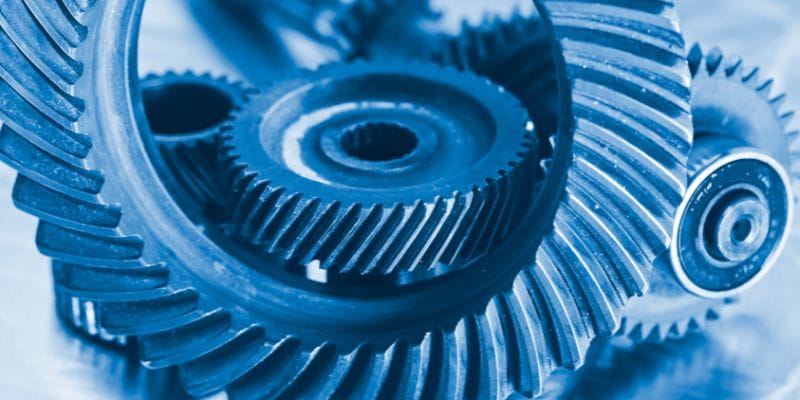
Expert Recommendations For Optimal Results
Replacing the pinion bearing on your Chevy truck requires precision and attention to detail. Here are expert recommendations to ensure optimal results:
- Use high-quality replacement bearings from trusted manufacturers such as Timken or SKF to ensure durability and longevity of the new bearing.
- Always follow the manufacturer’s torque specifications when tightening the pinion nut to ensure proper preload on the bearing.
- Enlist the help of a torque wrench to accurately tighten the pinion nut to the recommended torque, preventing over-tightening or under-tightening.
- Inspect the pinion seal for any signs of wear or damage and replace it if necessary to prevent oil leaks and contamination of the new bearing.
Maintenance Tips For Prolonged Bearing Life
Maintaining the pinion bearing is essential for prolonged bearing life and optimal performance of your Chevy truck. Here are some maintenance tips to keep the pinion bearing in top condition:
- Regularly check and maintain the gear oil level to ensure proper lubrication of the pinion bearing, preventing premature wear and damage.
- Inspect the pinion bearing for any signs of noise, vibration, or roughness during routine maintenance, and address any issues promptly to prevent further damage.
- Clean the surrounding area of the pinion bearing during routine maintenance to prevent the buildup of dirt and debris, which can affect the performance of the bearing.
- Periodically check and adjust the pinion bearing preload as per the manufacturer’s recommendations to maintain proper meshing of the gears and prevent premature wear.
Frequently Asked Questions On How To Replace Pinion Bearing On Chevy Truck
How Do I Know If My Chevy Truck’s Pinion Bearing Needs To Be Replaced?
You may notice a whining or rumbling noise coming from the rear of your Chevy truck, along with vibration or excessive play in the driveshaft. These are signs that the pinion bearing may need to be replaced.
What Are The Tools Needed To Replace The Pinion Bearing On A Chevy Truck?
You will require a torque wrench, bearing puller, drive pinion nut socket, and a standard mechanic’s toolset. Additionally, you may need a bearing press kit and a dial indicator to ensure the proper setup of the pinion bearing.
Can I Replace The Pinion Bearing On My Chevy Truck Without Professional Help?
While it’s possible to replace the pinion bearing on your Chevy truck yourself, it’s a complex repair that requires mechanical expertise. If you’re not confident in your abilities, it’s best to seek the assistance of a professional mechanic.
What Are The Potential Risks Of Driving With A Faulty Pinion Bearing In My Chevy Truck?
Continued driving with a faulty pinion bearing can lead to extensive damage in the differential, resulting in costly repairs. It can also affect the overall performance and safety of your Chevy truck, so it’s crucial to address any issues promptly.
Conclusion
Replacing the pinion bearing on your Chevy truck is a manageable task with the right tools and knowledge. By following the steps outlined in this guide, you can keep your vehicle running smoothly and prevent further damage. Remember to take your time and prioritize safety throughout the process.
With proper care, your truck will stay reliable for miles to come.

